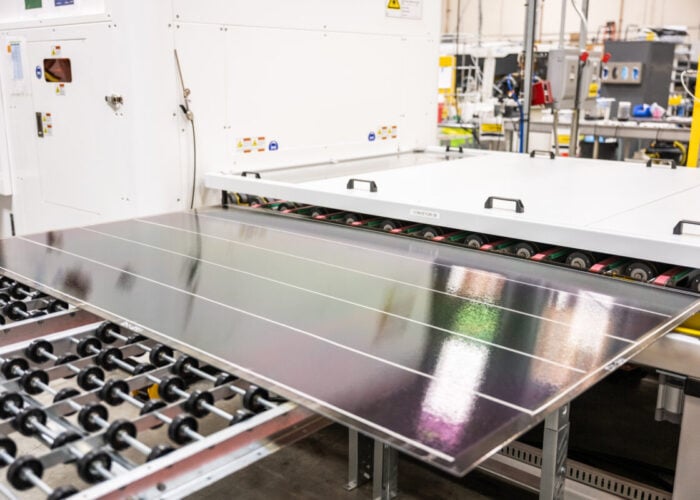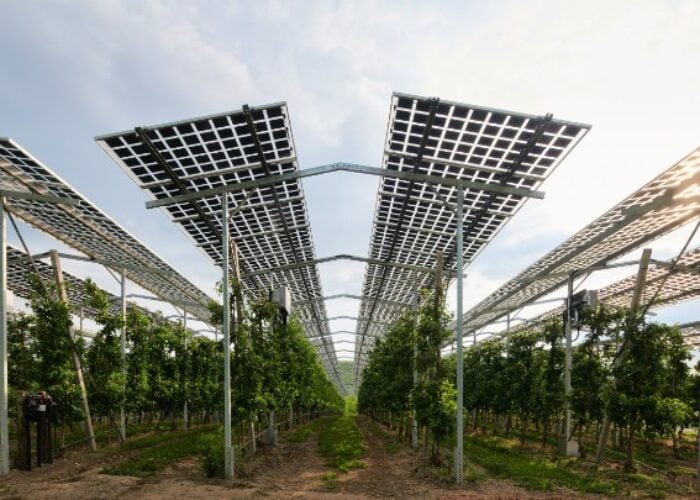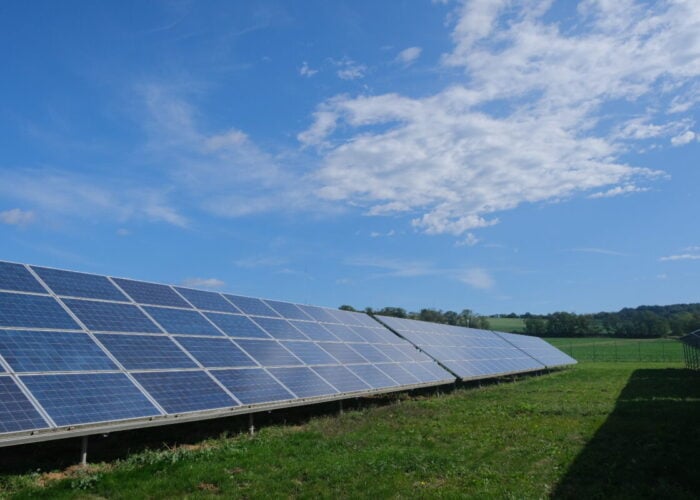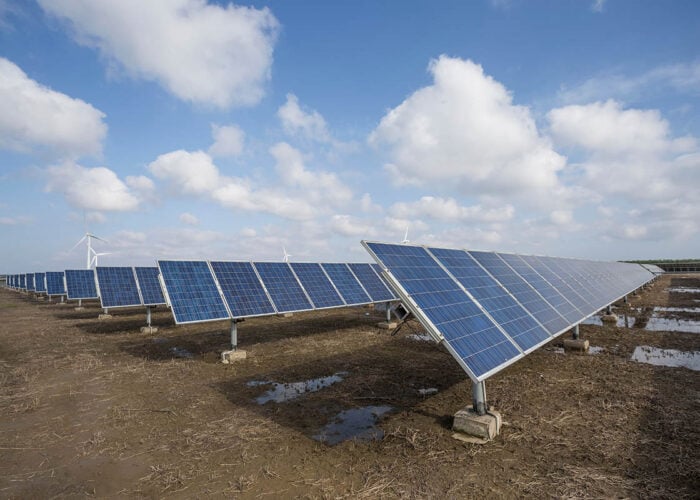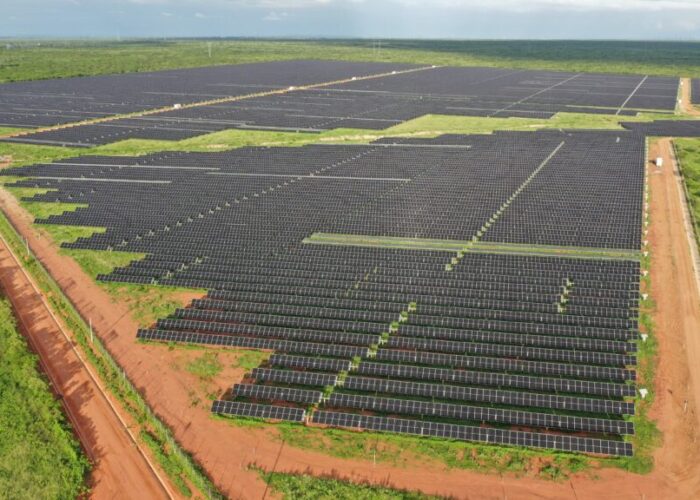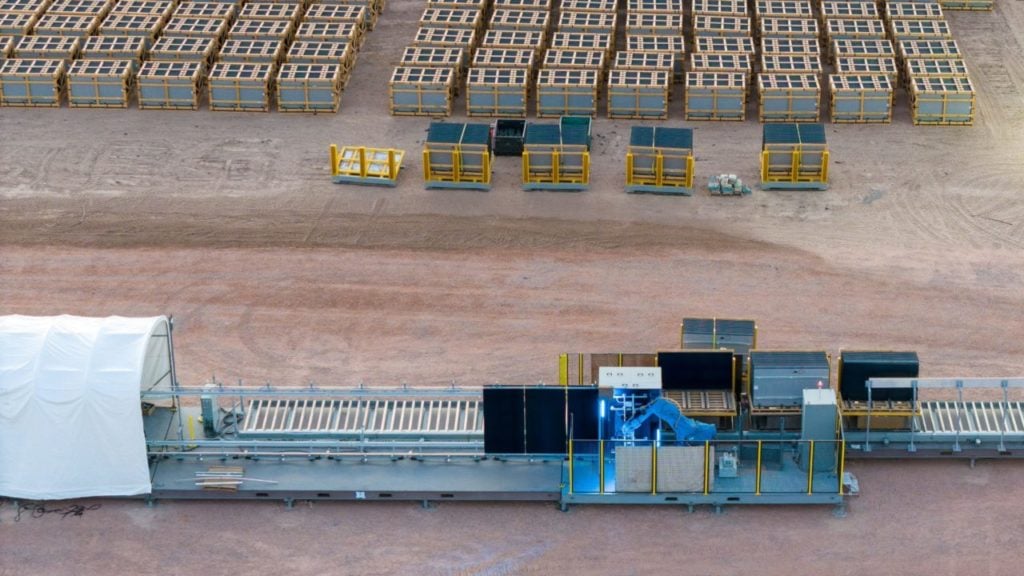
The first automated instalment of PV modules at scale on a solar project, which included handling 16,000 panels in a row without breaking one, is a major step towards combatting an epidemic of poor quality in the industry, Terabase CEO and co-founder Matt Campbell has told PV Tech Premium.
Last month, the US-headquartered software provider announced the unique achievement of its robotics-assisted Terafab platform, which installed 17MW of solar modules on the 225MW White Wing Ranch project in Arizona, reportedly the first such automation of this scale.
Unlock unlimited access for 12 whole months of distinctive global analysis
Photovoltaics International is now included.
- Regular insight and analysis of the industry’s biggest developments
- In-depth interviews with the industry’s leading figures
- Unlimited digital access to the PV Tech Power journal catalogue
- Unlimited digital access to the Photovoltaics International journal catalogue
- Access to more than 1,000 technical papers
- Discounts on Solar Media’s portfolio of events, in-person and virtual
The company completed the construction work in November, ahead of commissioning the project next year, and said at the time that it expected the use of autonomous installation processes to have improved the efficiency of the construction work by 25%, compared to the work that would have had to be done by human workers.
With such automated processes generating new data insights for developers, and improving operational efficiency at a time where solar companies are struggling to hire workers, automated construction could prove to be a key part of the global solar sector.
Unique onsite prefab
Terabase runs several digital programmes, with the most relevant to solar being Terabase Construct, a construction management and monitoring software for large-scale solar, and Terafab, a robotics-assisted construction automation solution.
For the headline 17MW installation, Terabase built a platform to automate the prefab construction processes, which involve the construction of building components to be used at the site.
The company located this factory at the site of the solar project itself, a move which confers a number of potential benefits. As Campbell says, the presence of offsite prefab facilities can make it more difficult to ship at very high density as the structures tend to be more expensive to transport, which eats into some of the savings generated by prefabrication.
He notes, however, that Australian company 5B does have a successful offsite prefab system and 5B’s CEO Chris McGrath explained the benefits of this system to PV Tech Premium in February this year. Meanwhile, other companies are approaching automation by turning trucks into robots to drive down rows and attach panels.
“The [onsite prefab] mobile factory can be set up in a day,” Campbell says, drawing attention to the speed with which Terabase’s factory can be constructed. “It includes some robotics and manual tasks, and basically, we ingest steel structural components like torque tubes and brackets and clips and then we robotically unload modules. We’ve got a conveyor of pallets and we pick up and offload them.”
Ensuring project quality
According to Campbell, ensuring project quality is the key motivator of such automated processes.
“It’s very, very hard to control quality in the middle of nowhere with a bunch of unskilled workers that don’t care about their job and then there’s an epidemic of poor quality in the industry,” claims Campbell. “If you look at the statistics, solar projects in the US systematically underperform. People don’t talk about it enough.”
Campbell also points to research from insurer kWh Analytics, published in December 2022, which revealed that US solar assets “are not meeting performance expectations”, risking the long-term reputation of the solar industry if, as a result, equity investors in PV projects do not see their return profiles being realised.
“To me, project quality at times gets swept under the rug for the sake of cost cutting and it’s not good when you’re trying to build a 30-year asset because problems materialise,” adds Campbell.
Delivering results
To counter this, robotics can offer a systematic control of quality. Terabase’s installation of 16,000 panels in a row without damage compare favourably to the typical breakage rates on a project noted by Campbell, which stand at 0.5-3%.
The use of automation delivers precise control of torque as well as handling of the panels, while digital control of the operations allows precise measurement and gauging of everything that is occurring in relation to the build.
At the Arizona project, Terabase noted improvements in operational efficiency, and the firm expects its next project to drive efficiency gains of around 32%. Its second-generation system is due out later next year, and the company expects construction to be completed2.5 times faster than at the most recent project, leading to 50% reduction in labour needs.
Despite chronic shortages of skilled labour up and down the PV value chain throughout the world, until now there has been little adoption of digital automation in the solar space with zero adoption of automation in the construction process, says Campbell.
Campbell also points to the history of the solar panel business, where cells used to be hand-soldered, but 15 years ago automated processes started to be used to connect cells to one another. Campbell claims that “it was automated not because of labour costs, it was automated for quality primarily.”
Other than quality, better worker health and safety are among the key benefits of this automation, since it eliminates the two most physical steps, the handling of the steel torque tubes and the modules, which are a high source of repetitive stress injuries and other worker issues.
Barriers to adoption
Solar developers concerned about labour costs and inflation are showing a strong interest in these automated systems, which has led Terabase to plan construction work at massive projects with a capacity of 800MW-1.5GW.
However, Campbell believes the key barrier to scaling the technology faster is fine tuning it for extreme conditions. He says many people see YouTube videos of robots installing panels on a perfect sunny day, but do not appreciate the difficulty of making it work in dust storms.
“It’s one thing to do automation in a Tesla factory where the lighting is controlled, the temperature is controlled, you’re on a concrete slab,” he says, going on to describe the temperature in Arizona, which reached as high as 50 degrees Celsius during work.
“When you’re doing heavy work all day, you have to shut down. You can’t actually build in that.”
The continuous loop of improvement
However, the use of automated processes also means that Terabase is gathering huge amounts of data over time, which Campbell believes can deliver sustained benefits for the company.
“We’re building this incredibly big data set,” says Campbell. “Once we have that, then we can train artificial intelligence (AI) on it to drive improvements. We’re sort of closing the loop between planning, execution, installation and then reporting back and planning and executing the ideas to drive the continuous loop of improvement.”
To plan a project, the company can now take a big data set and automate the installation using AI.
It builds a digital twin of the plant, which creates very precise depictions of aspects such as the production cycle times, and allows workers to assess the root causes of downtimes. It can also analyse individual installers onsite, seeing how much time is spent on any given activity, or what routes were taken by drivers and how fast they were driving.
“Everybody’s looking for ways to drive efficiencies,” says Campbell, on why Terabase was chosen by the White Wing Ranch solar project developer Leeward Renewable Energy (LRE) and EPC contractor RES, “Project economics are under pressure right now due to labour inflation, material inflation, higher interest rates, and shortages of people.
“In solar, we’re so used to costs going down and now they’re going up,” adds Campbell. “That’s why they wanted to be an early adopter partner on this.”


